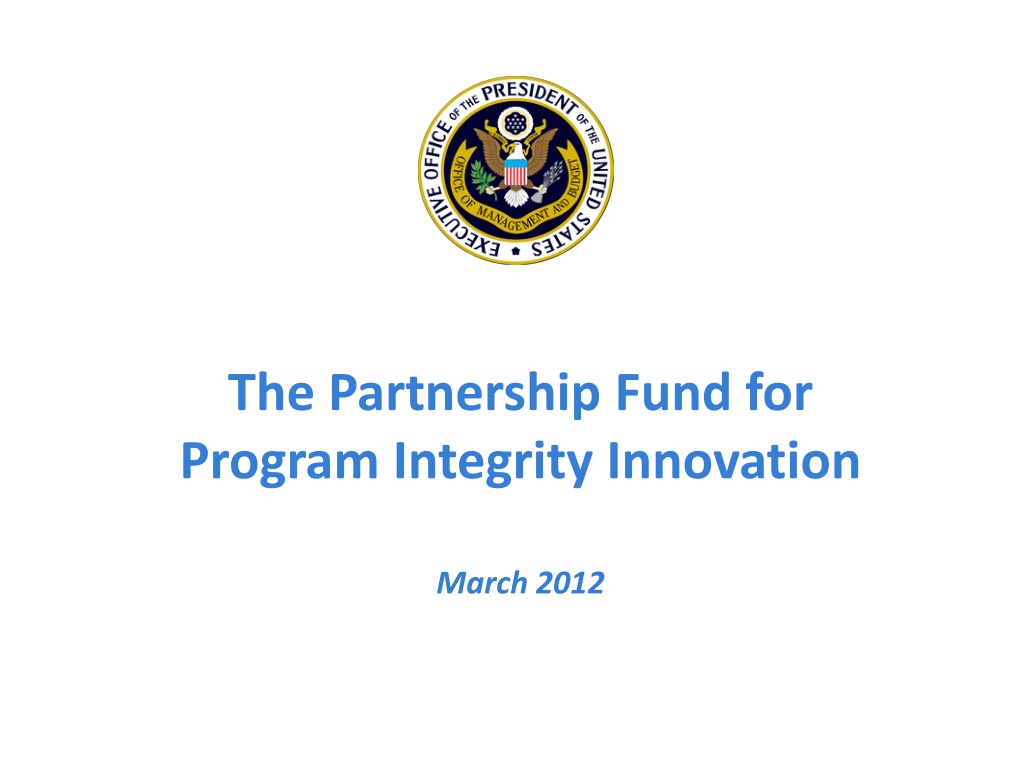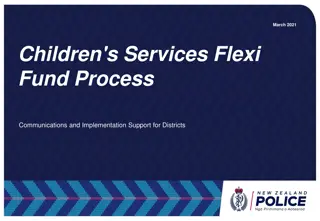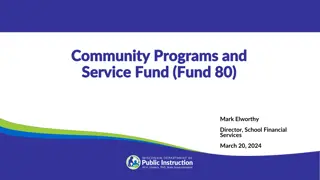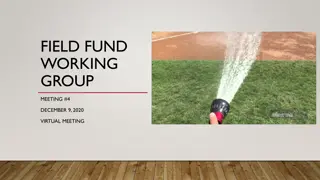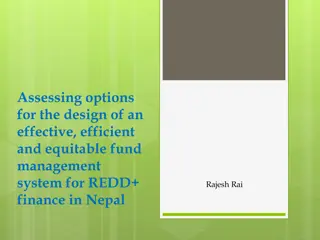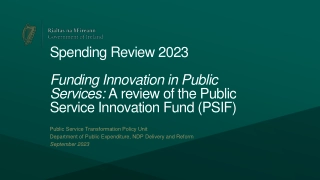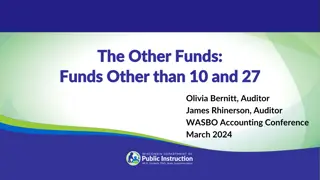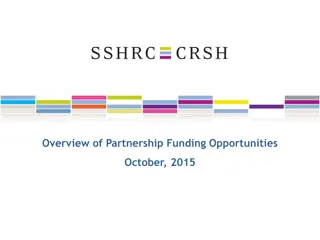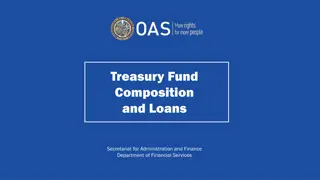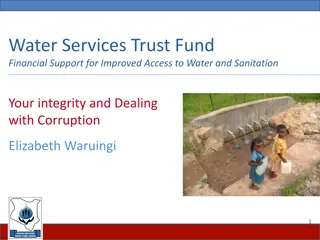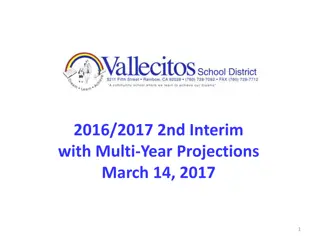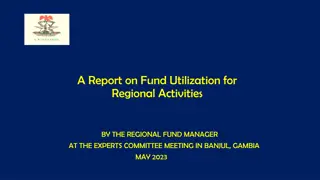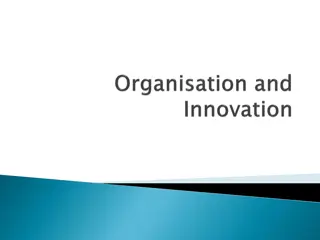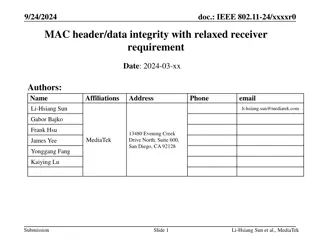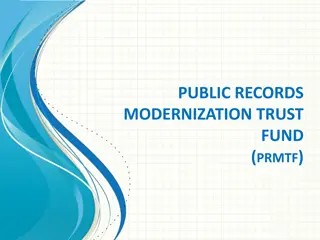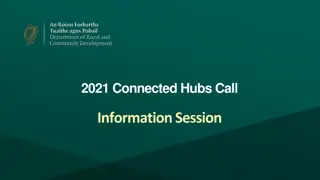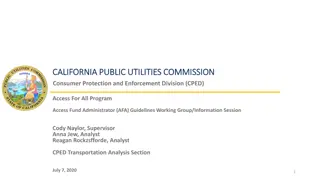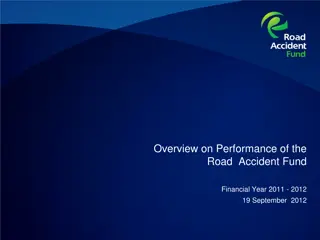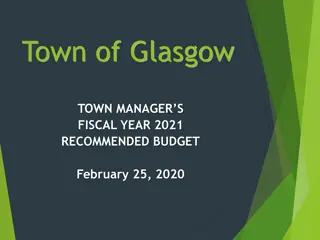Improving Program Integrity and Efficiency Through Partnership Fund for Innovation
The Partnership Fund for Program Integrity Innovation aims to incentivize stakeholders to identify and implement new innovations that streamline administration, strengthen program integrity, and improve service delivery in federal assistance programs with a substantial state role. By funding pilot projects and evaluations, the program focuses on reducing improper payments, enhancing payment accuracy, reducing access barriers, and improving administrative efficiency. The fund supports collaborative forums and initiatives such as National Accuracy Clearinghouse and expanding state TOP programs to achieve cost-effective outcomes and efficient service delivery.
Download Presentation

Please find below an Image/Link to download the presentation.
The content on the website is provided AS IS for your information and personal use only. It may not be sold, licensed, or shared on other websites without obtaining consent from the author. Download presentation by click this link. If you encounter any issues during the download, it is possible that the publisher has removed the file from their server.
E N D
Presentation Transcript
The Partnership Fund for Program Integrity Innovation March 2012
What is the Partnership Fund for Program Integrity Innovation? Premise: That individuals on the front lines of service delivery, including state and local governments, community organizations and other stakeholders have good ideas about how to reduce improper payments, improve efficiency and deliver better service to the public Purpose: To incentivize stakeholders to identify new innovations both within programs and beyond traditional program and jurisdictional bounds Incentives: Funding for pilot projects and evaluations that test innovations to streamline administration and/or strengthen program integrity Scope: Federal assistance programs that have a substantial State role Funding: $32.5 million appropriation Improve Service Delivery Improve Payment Accuracy Reduce Access Barriers Improve Administrative Efficiency 2
Partnership Fund Pilots: Growing Return on Investment Program Integrity: Our Early Focus EITC Data Matching Cross-State Efficiency: Increasing Our Gains Expand State TOP Programs Cost-Effective Outcomes: Our Future Direction National Accuracy Clearinghouse Accessing Financial Institution Data (Unemployment Insurance) Medicaid Provider Enrollment -- Automated Risk Assessment I2H2 Medicaid Provider Enrollment Shared Services Foster Care Electronic Transfers Education Time & Effort Reporting Alternatives Using SNAP Data in TANF Provider Scorecards Shared Services Data Warehouses Virtual Identity Management
Background Improper payments occur when: Funds go to the wrong recipient The right recipient receives the incorrect amount of funds (including overpayments and underpayments) Documentation is not available to support a payment The recipient uses funds in an improper manner Not all improper payments are fraud Not all improper payments represent a loss to the government 6
Background Landscape Payment errors have been steadily increasing since FY 2004 when Federal agencies first began measuring and reporting payment errors. The increase is the result of: More programs measuring errors More thorough measurement methodologies Increases in total Federal outlays Statistics FY 2011 improper payments were approximately $115 billion Represents a decrease in error rate from 5.3% to 4.69% The Medicare, Medicaid, EITC and Unemployment Insurance programs each had over $10 billion in improper payments 7
Government-Wide Goals On track to meet or exceed two bold POTUS goals Prevent $50 B in improper payments in 2010-2012 Error rate decrease from 5.3% (FY 2010) to 4.7% (FY 2011) $18 billion avoided in FY 2011 Over $20 billion in FYs 2010 and 2011 combined Recapture $2 B in contractor overpayments in 2010- 2012 Recaptured over $1.2 billion in FY 2011 (an increase of over 80% from FY 2010) In total, recaptured $1.9 billion in FYs 2010 and 2011 combined 8 8
Administration Actions Executive Order (November 2009) Senior accountable officials Public dashboard (paymentaccuracy.gov) Increased focus on forensics, audits, incentives Payment Recapture Audits Presidential Memo (March 2010) Double our performance on recoveries of payment errors to contractors Leverage specialized auditors paid based on what they recover Do Not Pay Presidential Memo (June 2010) Create a Federal "Do Not Pay List to tackle the problem of paying dead, tax delinquent, debarred, etc. 9
Administration Actions Improper Payments Elimination and Recovery Act (IPERA; July 2010) Signed bi-partisan law that requires more aggressive action on payment errors, including expansion of payment recapture efforts beyond contractors Administration targets for FY 12: prevent $50 billion government-wide, cut Medicare error rate in half 10
Improper Payment Amounts (FYs 2004-2011; $ in billions) 11
Improper Payment Rates (FYs 2004-2011) 12
Percentage Distribution of Improper Payments (FY 2011) 13
